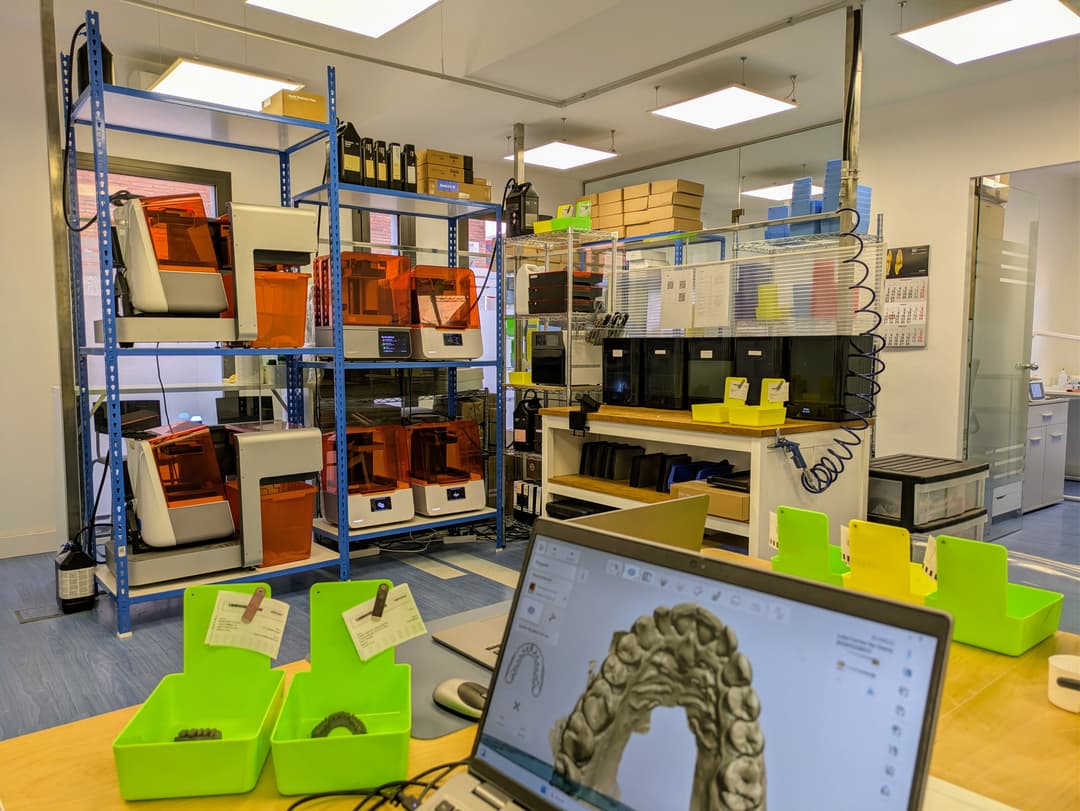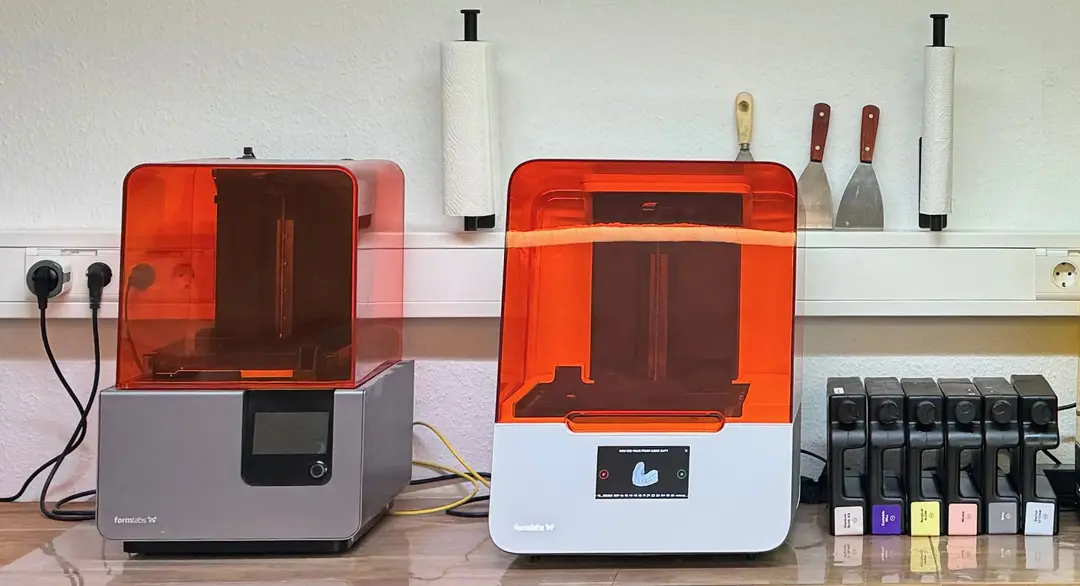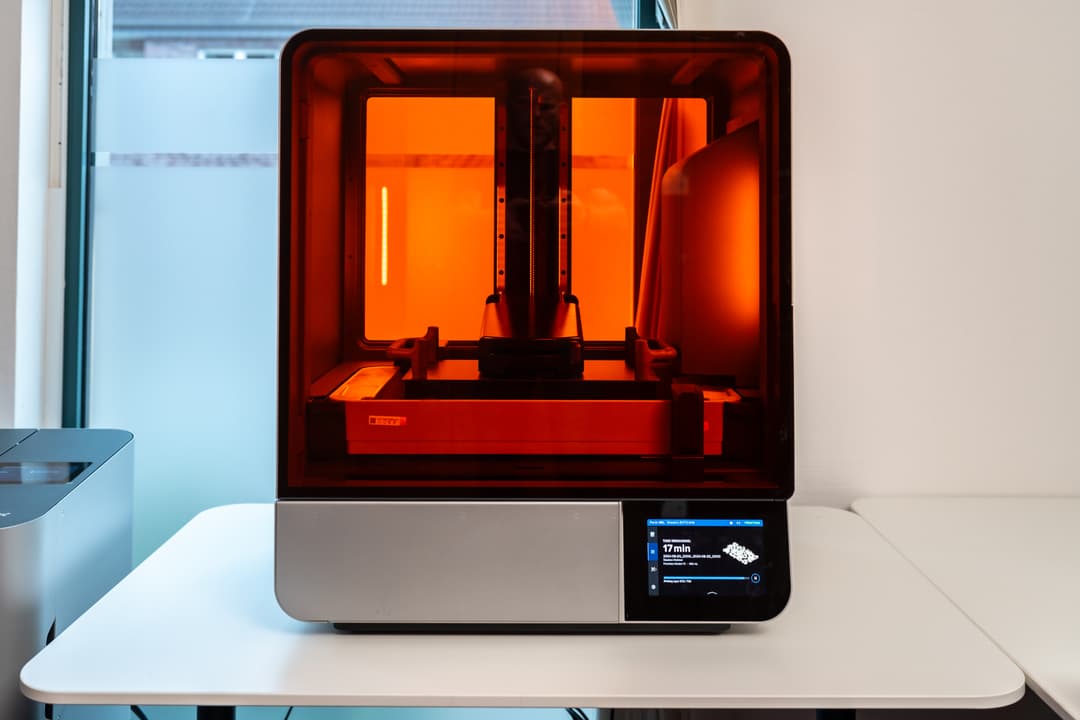From Early Adopter to 3D Expert: 20 Years of Digital Dentistry at Dental-Technik Hamm
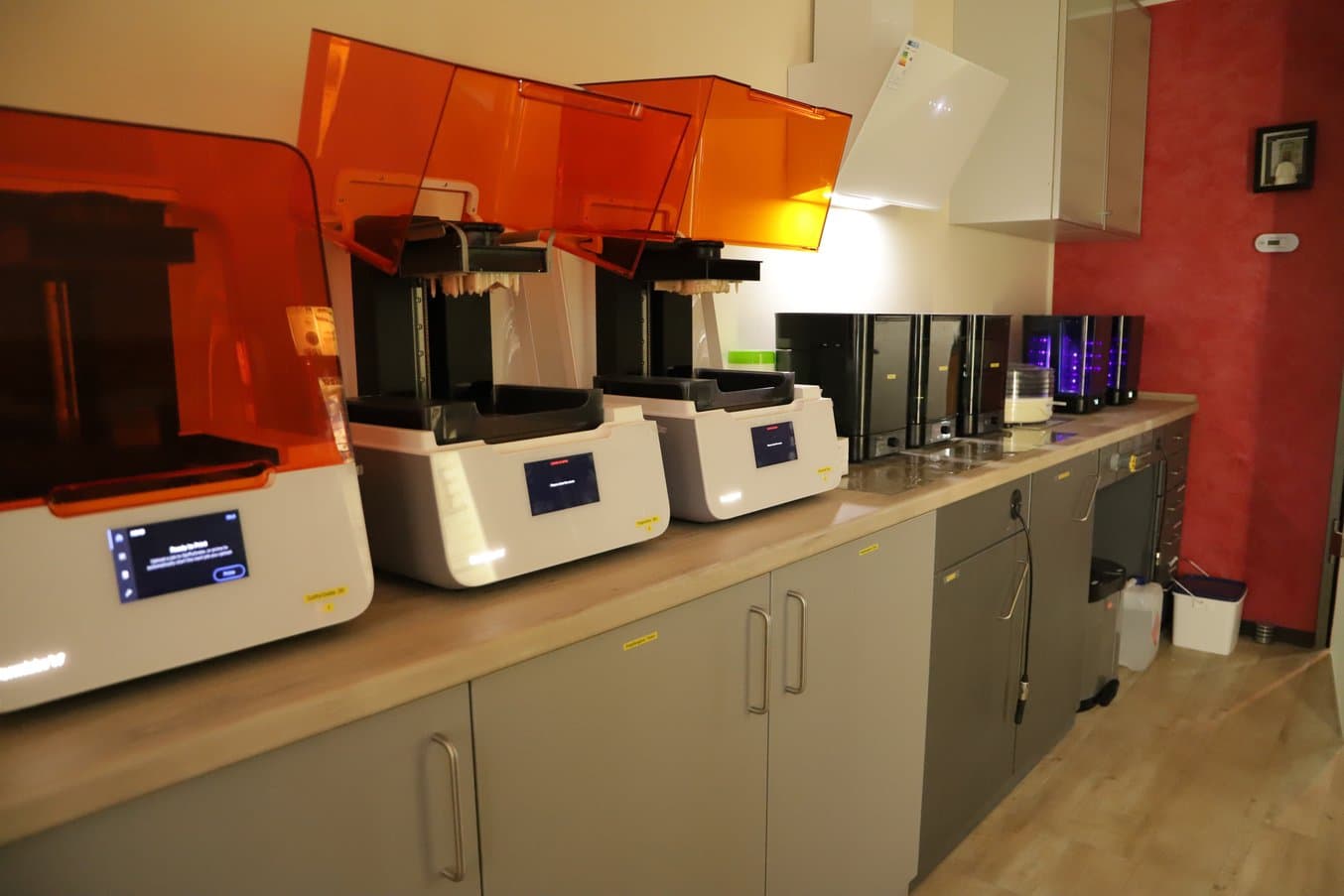
Dental laboratory workflows have changed a lot in the last thirty years, but Volker Hamm’s full-service lab, Dental-Technik Hamm, has not only stayed ahead of each new development, leveraged new techniques and processes to build a thriving business. By combining cutting-edge technology with a service-oriented mindset and a commitment to the highest level of standards, Hamm has grown his operation to nearly 20 dental technicians and a client base of nearly one hundred dental practices in the North Rhine-Westphalia region of Germany.
We spoke with Volker Hamm and Max Greissner, to learn how the lab got started with digital dentistry and 3D printing workflows and, after years of research and testing, has found a workflow with Formlabs Dental that makes life easier for his lab and for his customers.
The Decision To Go Digital
Dental-Technik Hamm had been working with analog processes for a decade when Hamm decided it was time to look to the future. In 2004, he became an early adopter of digital technology, starting with a system called Etkon that allowed the lab to design in CAD and outsource the production of models, crowns, and bridges. Four years later, Hamm made another step forward and brought the workflow in-house with 3shape software and their own milling machine. The leap to 3D printing wasn’t far behind, and in 2016 Dental-Technik Hamm started intraoral scanning and 3D printing with a small digital light processing (DLP) resin printer. With each new step, Dental-Technik Hamm gained the trust of the doctors in their network and of their colleagues in the lab industry.

Formlabs Automation Ecosystem: How SecretAligner Maximized Production & Lessons For Setting Your Workplace Up For Success
In this webinar by Dr. Elisa Praderi and Dr. Pablo Kehyaian, Orthodontist, Ceo & Founder of Secret Aligner, you'll get the chance to dive deeper into Formlabs' Automation Ecosystem, including the Form Auto, Fleet Control, and High Volume Resin System.
Price, Support, Ease-of Use: Choosing Formlabs Dental
After a year of working with the DLP printer, Hamm and his colleagues started looking for something that could match their growing output, and began to research options for higher throughput that could enable a wide range of applications. Formlabs appealed to him because of the clear workflow, and accessible support. “Everything was there, everything could be seen, multilingual, with the store clearly laid out and all the explanatory videos,” Greissner remembers.
Following extensive research, Hamm purchased his first Form 2 printer in 2017 and immediately started production. As any good innovator would do, Hamm has kept testing new products, always looking for the best tool. Several years ago, the lab ordered an industrial-grade printer for eight to ten times the price of the Form 2 to try out its specialized workflow for occlusal splint production, but eventually ended the contract after realizing the products weren’t meeting the clinicians’ expectations. Dental-Technik Hamm has returned time and time again to Formlabs Dental products for their ease of use, fast print speeds, reliability, and wide range of materials.
Formlabs then developed further with new printers, faster speeds, new materials, and everything always worked so well. We have done tests with other printers, and the expensive printers, which cost around 20,000 €, performed many times worse than our Formlabs printers.
Max Greissner, MDT, Dental-Technik Hamm
New products like the Build Platform 2 have made the Formlabs Dental workflow even easier for Hamm’s team. With such a high volume of requests coming in every day, the team needs an easy, fast solution for part removal and post-processing. The Build Platform 2’s Quick Release Technology cuts down on the time needed to spend removing prints from the platform and reduces the risk of damaging parts and having to start again. “We have the Build Platform 2 for all printers now. It is simply much more relaxed and faster to detach the prints. With the old platform, we had to loosen the models partly with a hammer and spatula, and in the process, models got broken. Or, we took too long and the residual material on the models hardened a bit and could not be washed off completely. So the Build Platform 2 is top!” Greissner told us.
Hamm mentioned customer support as another strength of Formlabs Dental. Their network of customers include practices that have in-house labs that frequently need extensive support after installing a scanner and a 3D printer, especially in the beginning. Working with Formlabs support has helped Dental-Technik Hamm and their client network to go beyond just fulfilling orders — together they’ve optimized their operations, addressing any issues quickly and efficiently along the way. “That's another advantage that our customers really appreciate. It's not highly complicated, I have to say. It's all very simple,” Hamm said.
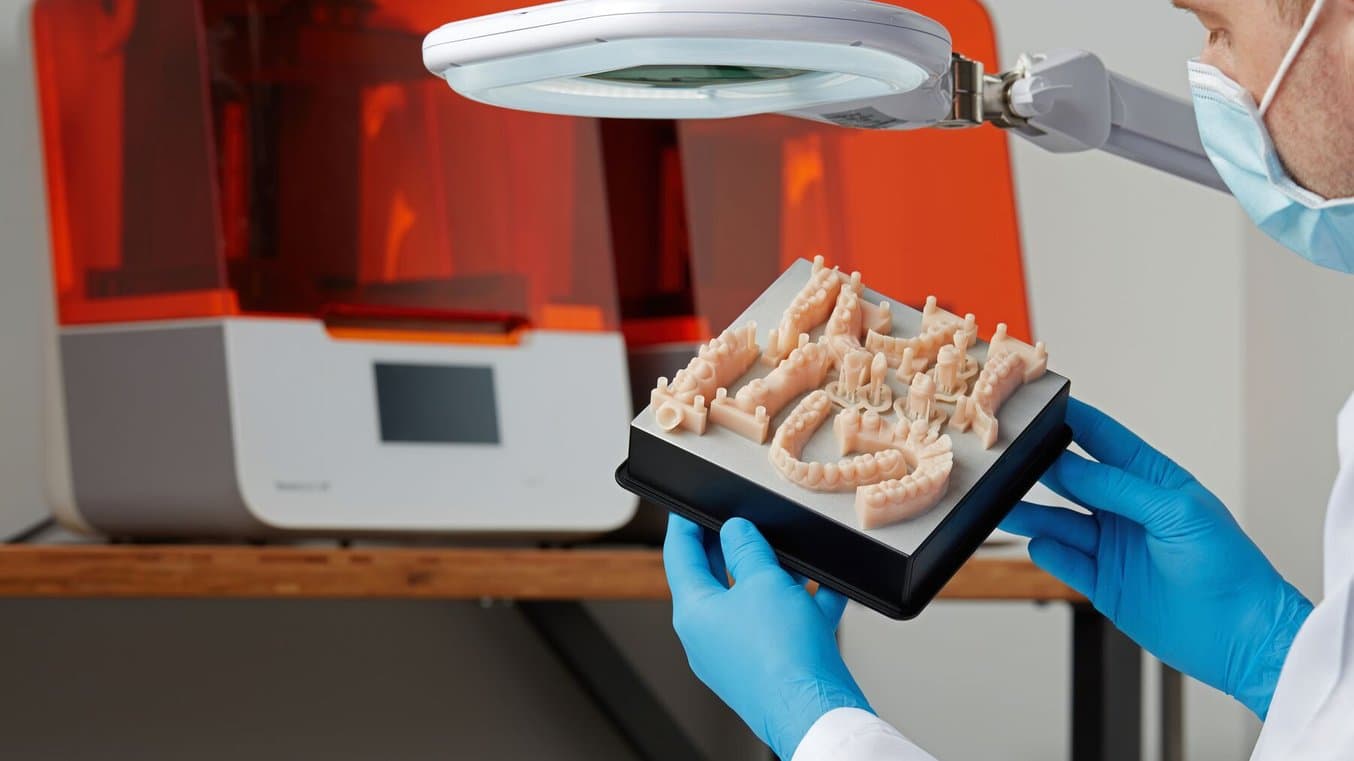
3D Printer Buyer’s Guide for Dental Labs
If you are managing a dental laboratory, look no further—this is your ultimate guide to digital dentistry.
Learn about cutting-edge digital solutions for digital impressions, treatment planning, design, and manufacturing, in this whitepaper. There’s no way around it: the future of dentistry is inevitably digital.
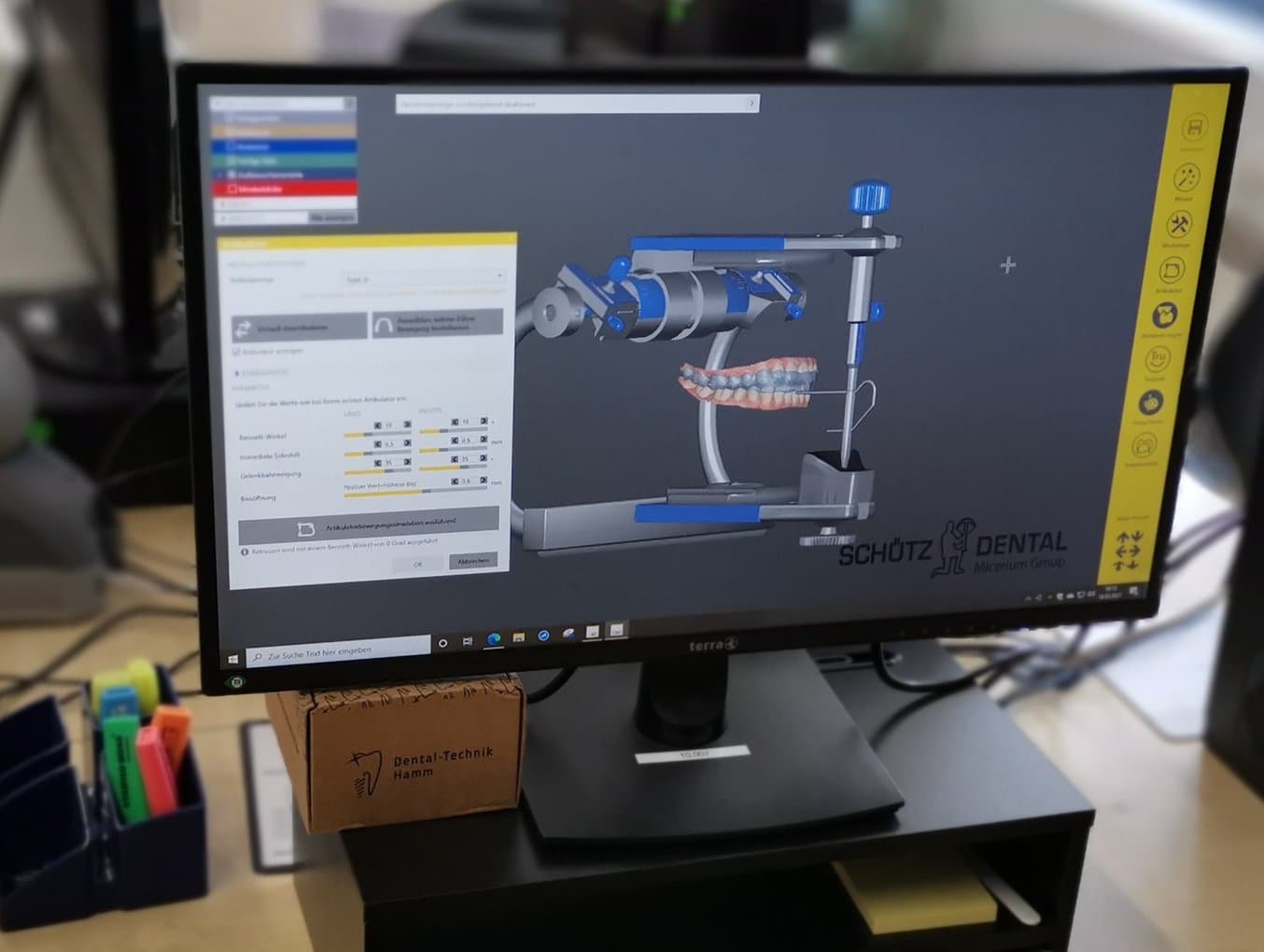
With digital design and 3D printing dental applications in-house, Dental-Technik Hamm has increased their productivity and is therefore able to handle increasing numbers of requests – even in times where finding skilled workers is difficult.
Validating Processes to Unlock Production Potential
Upholding high standards of care requires Dental-Technik Hamm to be scrupulous about maintaining validated workflows for each different dental indication. Formlabs Dental makes it as easy as possible for dental labs and practices to access the documentation, guidelines, and workflows for each new application. “If we need anything, e.g. declaration of conformity, everything is downloadable without any problem. So these specifications that we need as a certified company are not an issue at all with Formlabs. Everything is already incorporated and very good.”
Today, Dental-Technik Hamm is leveraging six Formlabs Dental materials as part of their expanding offerings, with goals to continue expansion into new indications in the future. They offer:
-
Model Resin to create restorative models for fitment check of bridges, crowns and more.
-
Dental LT Clear V2 Resin for occlusal splints, a growing request from their clients.
-
Surgical Guide Resin for biocompatible surgical guides used to reduce operating time by more than 50%.
-
Draft Resin for printing models used to fabricate thermoformed appliances.
-
Custom Tray Resin for creating personalized trays used in restorative dentistry.
- Temporary CB Resin for provisional restorations (testing).
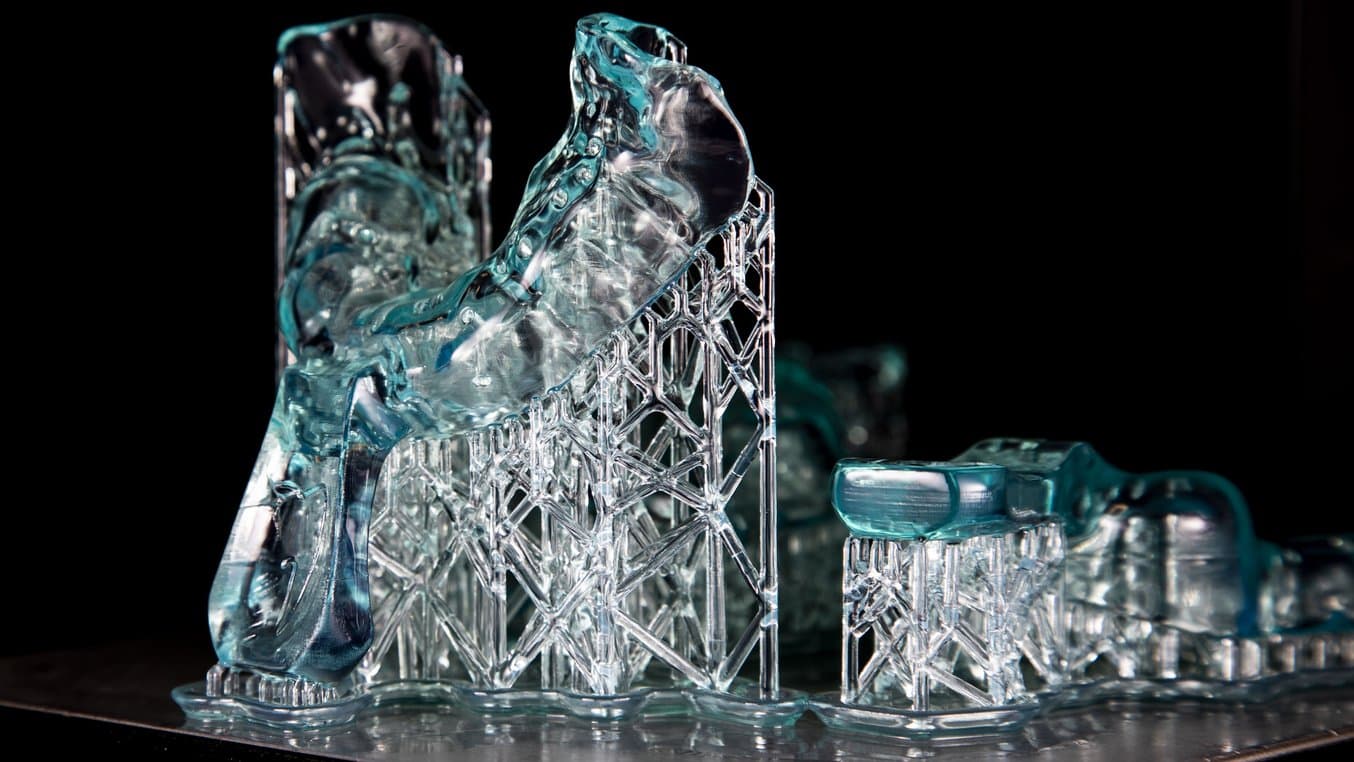
Formlabs Dental’s constantly expanding library of printing materials steadily opens up new opportunities for using the Form 3B+ in dental labs, for indications like custom trays.

Speed and Responsiveness Through a Digital Workflow
When dealing with the volume of requests that Dental-Technik Hamm receives on a daily basis, efficiency and responsiveness are of the highest priority — their clients rely on them to provide prompt, high quality service, every time. Before they integrated a fully digital workflow, they needed to physically visit each dental office to resolve issues with an appliance, pick up impressions, or speak with the clients. With digital scans, modeling, and a 3D printing workflow, the lab can save hours of time, and free up their technicians for high value tasks like design. As it becomes increasingly difficult to fully staff.
I am promoting this entire digitization process so strongly because we also have a problem with skilled workers. We have the problem of finding technicians in the first place. And I believe that if we were still working at the level of ten years ago, we would need three more technicians. With models or custom trays we are clearly faster now, thanks to the printers. Especially with custom trays, you also have much nicer and more consistent results.
Volker Hamm, CEO of Dental-Technik Hamm
Another advantage of digitized processes is that some steps can be done without the patient being present there in person, which makes the workflow more simple and more comfortable for them. "Since the dentist's offices are often completely overloaded, they are happy with every appointment they can save. That's what digitization is for me, the main argument is time savings, better processes, but also, without care in scanning, it doesn't work either. Without care in printing, it doesn't work either. But I think every lab has to experience this for itself. That it's also up to us, the users", Volker Hamm said.
Not only thanks to the reduction of production time Dental-Technik Hamm can raise their profit in comparison to traditional production techniques, but also because of the affordable prices for Formlabs additive hardware and materials.
If I save time, I also save money. Besides, it has to be said that it is also much cheaper in terms of the materials used in printing. Well, if I compare milling and printing, printing is always significantly cheaper in all areas, to the point that it's only a tenth of the price.
Volker Hamm, CEO of Dental-Technik Hamm

Dentistry Made Easier: 3D Printed Restorations With The Latest Materials, Now Faster Than Ever
In this free joint webinar with BEGO and Formlabs Dental, you will learn more about the materials used for printing restorations, as well as the step-by-step digital workflow for producing these parts using the Form 3B+ and Permanent and Temporary Crown Resin from Formlabs. You will also learn characterization techniques for achieving optimal results and the benefits of SLA 3D printing.
Occlusal Splints: Passing the Test with Patients
Dental-Technik Hamm has been fabricating occlusal splints for over a year after rigorous testing to ensure the material would be rugged enough for patients’ daily wear. “We first tested it in a practice that indicates a lot of occlusal splints and they are actually thrilled with it because the fit is very good. If we weren't satisfied with it, we would continue to mill, but we are switching more and more to printing”, Volker Hamm said.
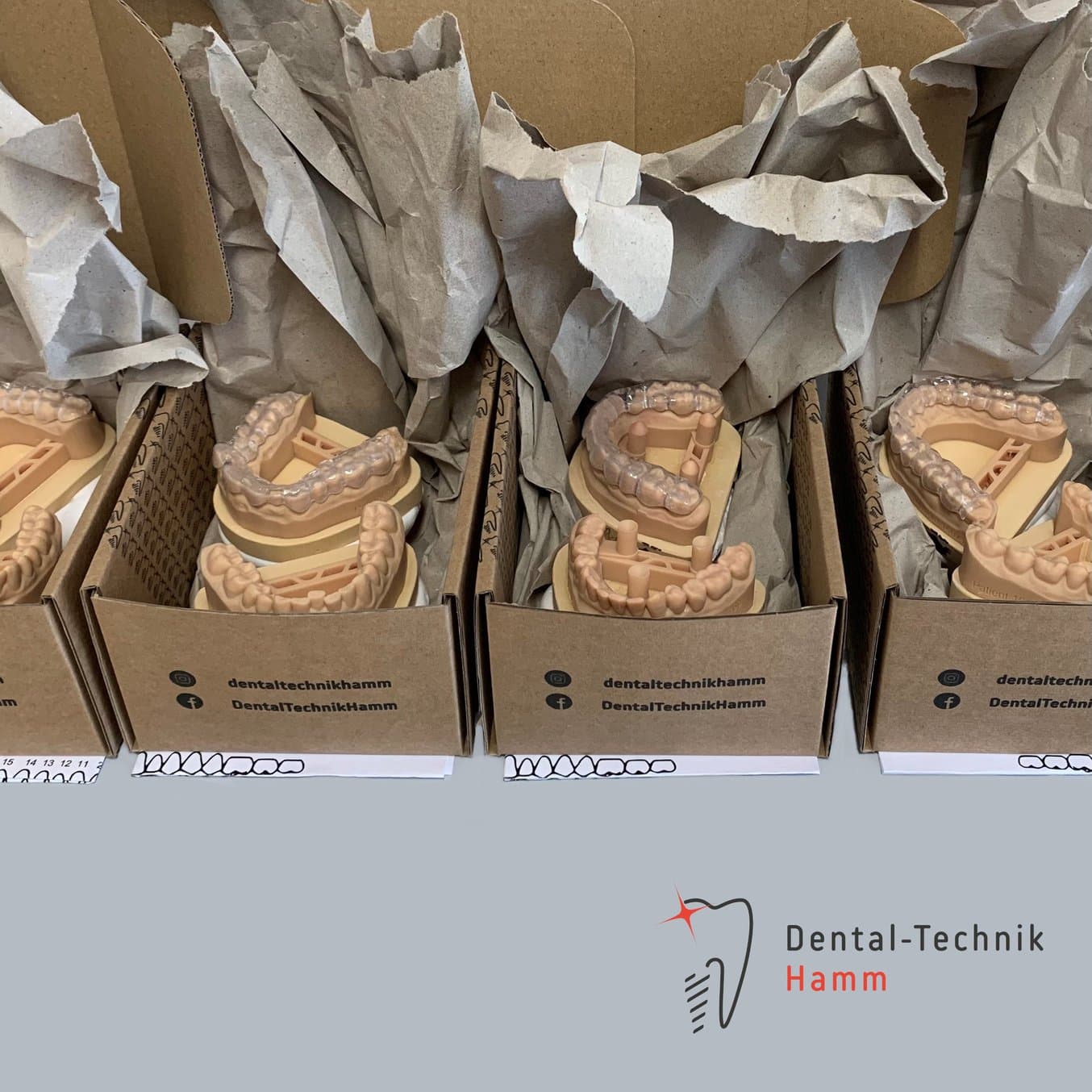
Accuracy and precision are incredibly important in dental 3D printing — for splints such as these (clear material, Dental LT Clear V2), the clear appliance has to fit perfectly onto the 3D printed model .
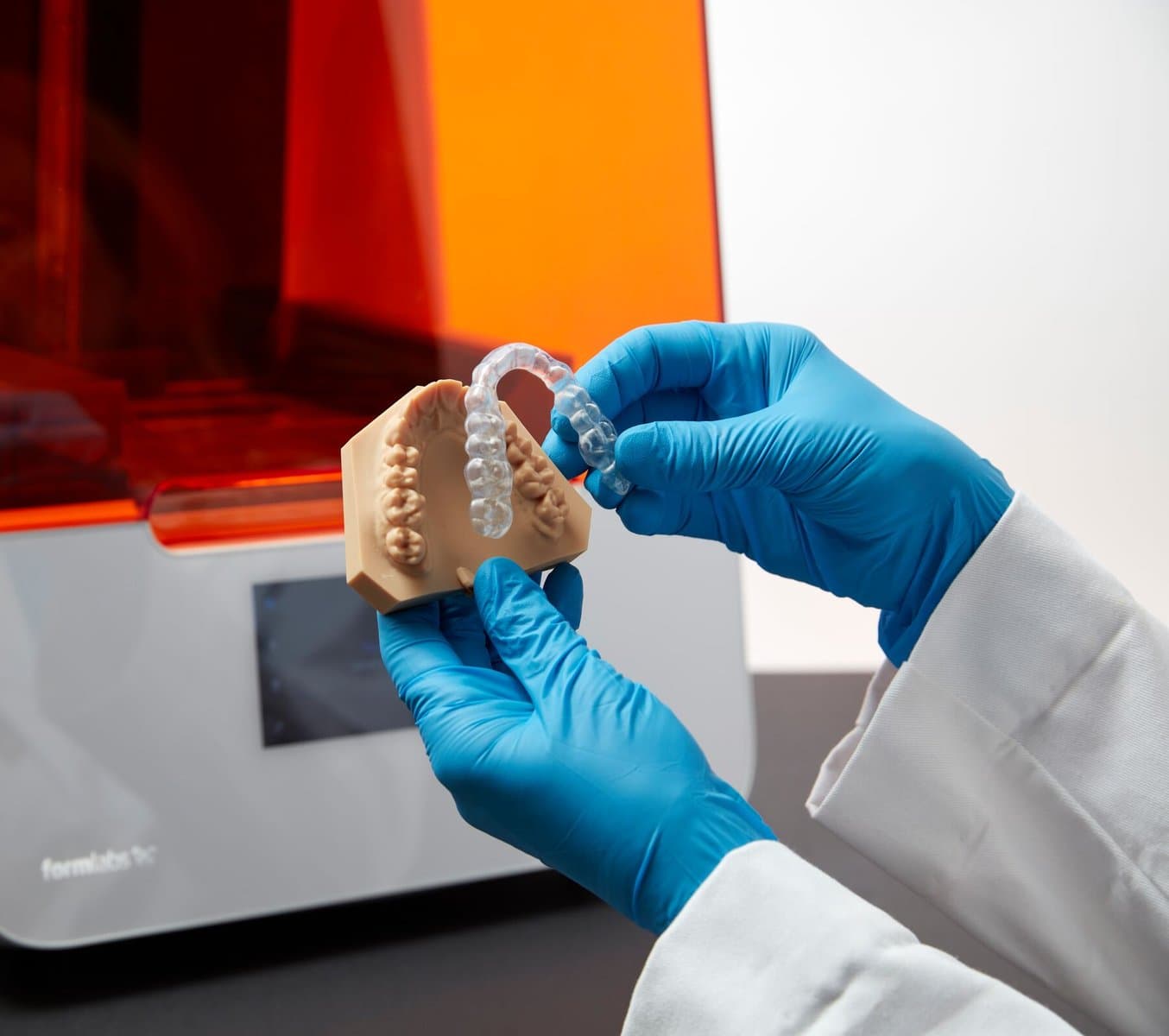
How To Produce The Perfect Splint In Your Dental Lab
Join Bill Slocum, Formlabs’ Dental Applications Engineer, to discover the main areas of focus for dental laboratories when producing occlusal splints, so your lab can achieve success when it comes to your digital dentistry workflow.
Simplification and Automation as a next step in digital workflows
Dental-Technik Hamm is an early adopter of latest technologies while putting emphasis on making well-considered decisions. With almost two decades of experience in digital technologies, their lab is well equipped with desktop scanners, milling machines and Formlabs SLA printers. They are currently moving forward to the next step of digital production by testing Fleet Control, one of the three elements of the Formlabs Dental Automation Ecosystem. Next, they are considering further automation tools such as adding the Form Auto to automate print part removal. “Our goal is to design and print more and more digitally,” says Hamm. To learn more about digitizing your dental workflow, contact our specialists or explore the Form 3B+, our industry-leading dental 3D printer.
